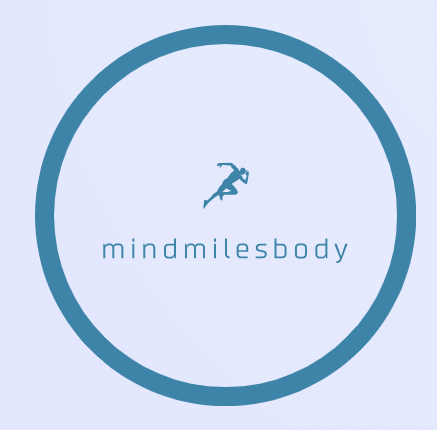Goal Setting & Achievement: Unlocking Your Full Potential
Imagine waking up each morning with a clear sense of purpose, knowing exactly what you want to achieve and how you’re going to get there. For many, this isn’t just a dream—it’s a reality shaped by effective goal setting. Whether you’re aiming for a promotion, running your first marathon, or simply striving to be a better version of yourself, mastering the art of setting and achieving goals can transform your life.
Why Goal Setting Matters
Goal setting is more than just writing down a wish list. It’s a deliberate process that turns aspirations into actionable plans. When you set clear goals, you give yourself direction, boost your motivation, and create a roadmap for success. Research consistently shows that people who set specific, challenging goals are more likely to achieve higher levels of performance and satisfaction.
The Power of the SMART Framework
One of the most widely respected methods for effective goal setting is the SMART framework. SMART stands for Specific, Measurable, Actionable, Rewarding, and Time-specific. Let’s break down each component and see how it can elevate your ambitions:
Specific: Vague goals lead to vague results. Instead of saying, “I want to get fit,” specify, “I want to run a 5K without stopping.”
Measurable: How will you know when you’ve succeeded? Measurable goals let you track progress. For example, “I will run three times a week and increase my distance by half a kilometer each week.”
Actionable: Your goal should be within your control and require direct action. “I will follow a structured training plan” is actionable, while “I hope the weather is good” is not.
Rewarding: Tie your goal to something meaningful. Ask yourself, “Why is this important to me?” Maybe running a 5K is about proving resilience or raising money for charity.
Time-specific: Set a deadline. “I will complete my 5K in 12 weeks” gives you a finish line to aim for.
Breaking Down Big Goals
Large goals can feel overwhelming. The secret to overcoming this is breaking them down into smaller, manageable steps. Imagine your goal as a staircase. Each step is a mini-goal that brings you closer to the top. This approach not only makes the process less daunting but also gives you regular opportunities to celebrate progress, keeping your motivation high.
For example, if your ultimate goal is to write a book, your sub-goals might include:
Outlining chapters
Writing 500 words per day
Completing a draft of one chapter each week
Each small victory builds momentum, making the larger goal feel attainable.
Tracking Progress: The Key to Consistency
Tracking your progress is essential for staying on course and maintaining motivation. This can be as simple as keeping a journal, using a habit-tracking app, or marking milestones on a calendar. Regularly reviewing your progress allows you to adjust your strategies, celebrate achievements, and stay accountable to yourself.
Did you know? People who vividly describe or picture their goals are anywhere from 1.2 to 1.4 times more likely to successfully accomplish them. Visualization and tracking aren’t just motivational—they’re scientifically proven to enhance achievement.
The PACT Method: Purposeful and Continuous Growth
While SMART is excellent for outcome-based goals, the PACT method offers a unique approach for long-term, process-oriented ambitions:
Purposeful: Connect your goals to your core values. Ask yourself, “What truly matters to me?”
Actionable: Focus on daily actions, not just the end result. Progress is made one day at a time.
Continuous: Allow for experimentation and learning. Growth is rarely linear; embrace mistakes as part of the journey.
Trackable: Keep tabs on your actions, not just outcomes. Did you show up today? Did you put in the effort?
Combining SMART and PACT can create a powerful synergy, ensuring both short-term wins and long-term growth.
Overcoming Obstacles
No journey is without setbacks. Obstacles are inevitable, but your response to them determines your ultimate success. When you encounter challenges:
Revisit your “why.” Remind yourself of the deeper purpose behind your goal.
Adjust your plan. Flexibility is crucial; if one approach isn’t working, try another.
Seek support. Accountability partners, mentors, or online communities can provide encouragement and fresh perspectives.
A Personal Challenge
Here’s something you might not have tried before: Write a “future letter” to yourself. Imagine it’s a year from now and you’ve achieved your goal. Describe how you feel, what you’ve learned, and how your life has changed. This exercise can crystallize your vision and boost your motivation in ways you never expected.
The Ripple Effect
Achieving one goal often sparks a chain reaction. The confidence and skills you gain spill over into other areas of your life. You become more resilient, adaptable, and self-assured. Over time, goal setting becomes less about ticking boxes and more about becoming the person you aspire to be.
Final Thoughts
Goal setting is a dynamic, ongoing process. It’s about more than reaching a finish line—it’s about growth, learning, and becoming your best self. By embracing proven techniques like SMART and PACT, breaking down big ambitions, and tracking your progress, you unlock a powerful force within you.
Start today. Choose one goal, make it SMART, break it down, and take your first step. Your future self is waiting—and you might just surprise yourself with what you can achieve.

